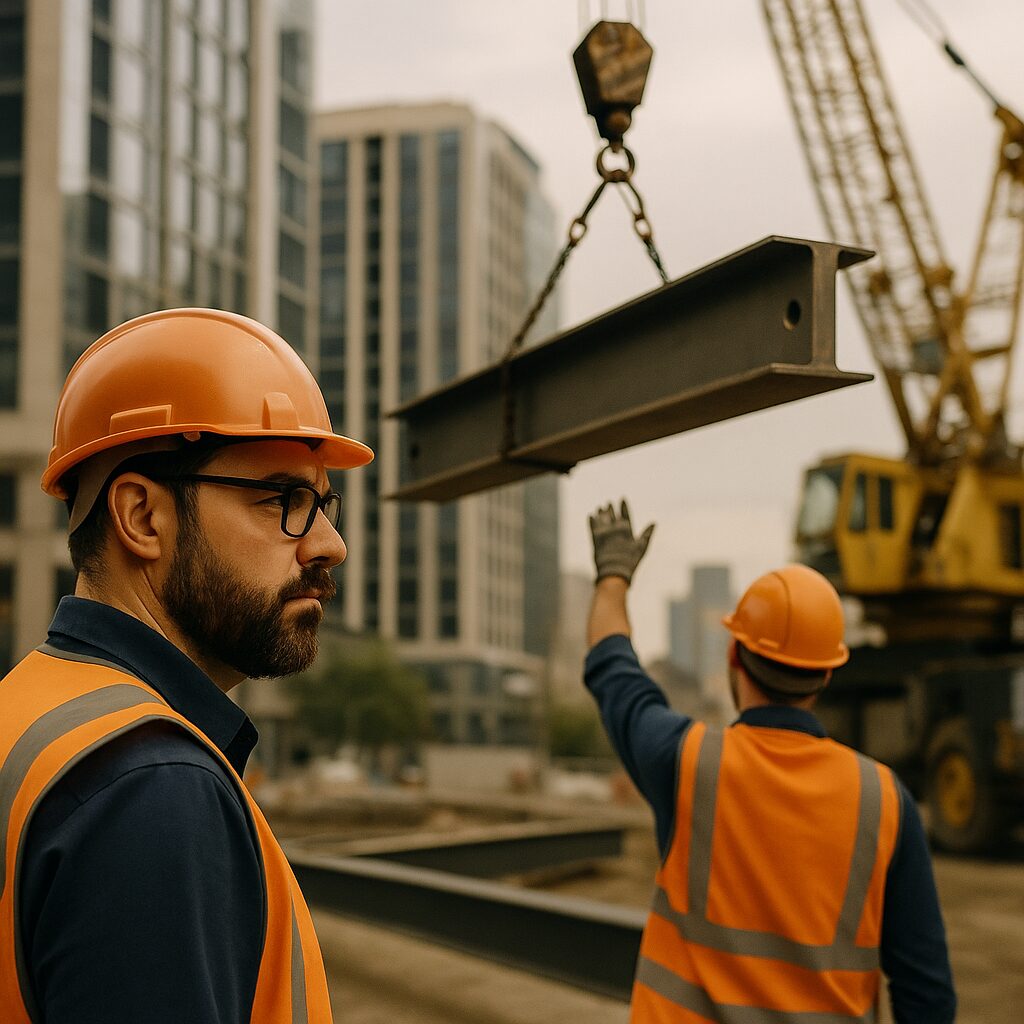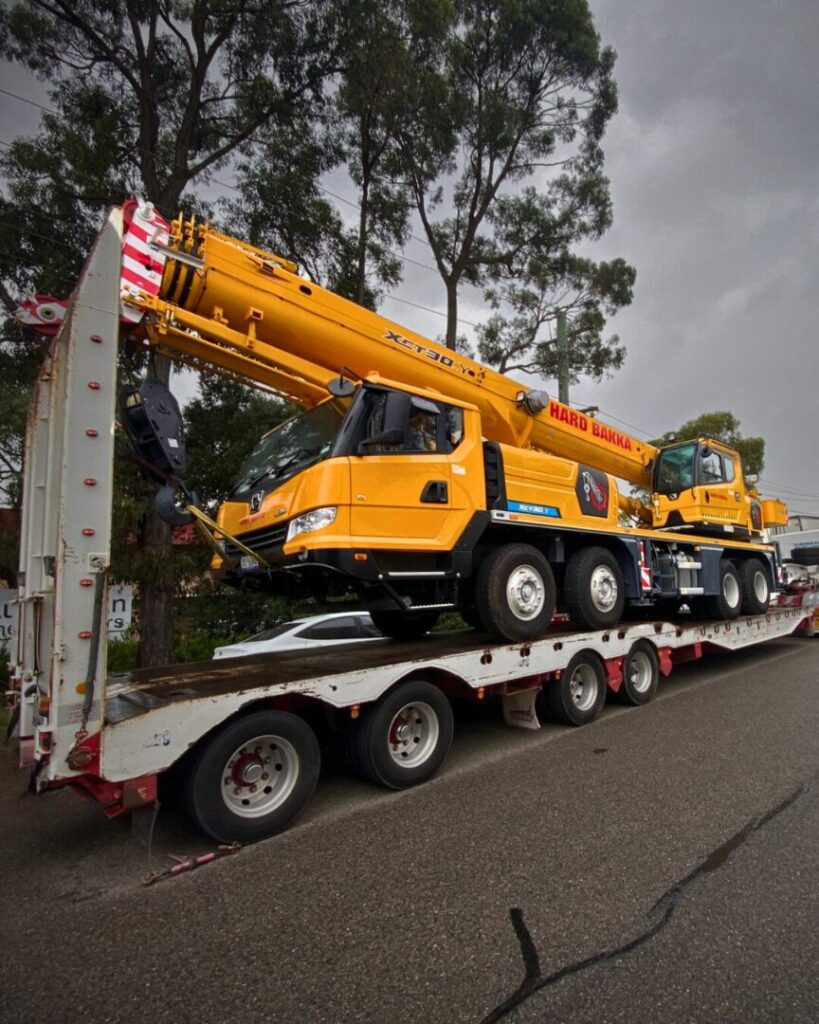Understanding the Common Causes of Steel Erection Delays and How to Avoid Them
Steel erection is often a make-or-break phase in construction, particularly in Sydney and NSW’s fast-paced environment. When it goes smoothly, projects stay on schedule. But when delays strike, they ripple across budgets, timelines, and safety.
In this article, we reveal the most common causes of erection delays, backed by real data, standards, and case examples—and show how you can prevent them. Whether you’re a project manager, estimator, or site supervisor, these insights will help you keep your lifts on track.
1. Inadequate Pre-planning & Coordination
Why It’s a Risk
Without precise coordination across fabrication, site logistics, and crane operations, even a small error in sequence can cascade into significant stop-work time.
Key pitfalls:
- Overlooking crane reach, slew, or obstruction conflicts
- Failing to align production, delivery, and erection windows
- Blind spots in site access, ground conditions, or trade overlap
How to prevent it:
- Hold early coordination workshops among engineers, fabricators, and riggers
- Use 3D simulations or BIM to test crane placements and lift paths
- Build buffer time for repositioning, ground prep, or unexpected delays
Tip: Lift plans are not one-size-fits-all. Under AS 2550.5 and WHS Regulation, lift plans need to be tailored to site conditions and complexity.

2. Errors in Drawings, Detailing & Fabrication
The Consequences
Misaligned holes, incorrect weld sizes, or inconsistencies between shop and erection drawings frequently lead to on-site rework and downtime.
Frequent error sources:
- Mismatched tolerances between GA, shop & erection sets
- Variations between drawing revisions
- Missing structural supports or bracing details
How to avoid them:
- Conduct cross-checks between GA, shop, and erection documents
- Enforce strict revision control and issue logs
- Perform mock-ups or fit-checks for critical or complex connections
Case in point: In many Sydney jobs, embeds or base plates are out of tolerance—forcing crane repositioning or field rework.
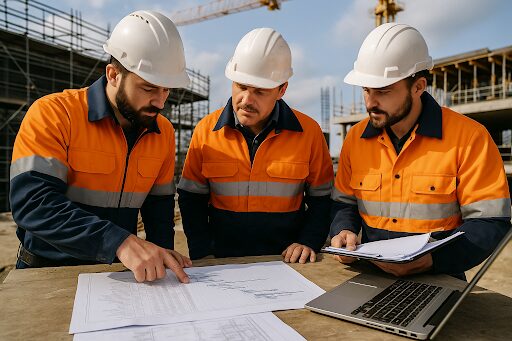
3. Delivery Delays & On-Site Material Handling Issues
Why It Causes Big Delays
Even if fabrication is flawless, late deliveries or poor site layout force extra crane hours, double-handling, and wasted time.
Typical problems:
- Logistics bottlenecks or supplier schedule slippage
- No staging area near the lift zone
- Damage, corrosion, or material shifts during transit or storage
Best practices:
- Tie delivery to erection sequence (“just-in-time staging”)
- Use protected laydown zones and material covers
- Communicate with logistics teams and track delivery windows
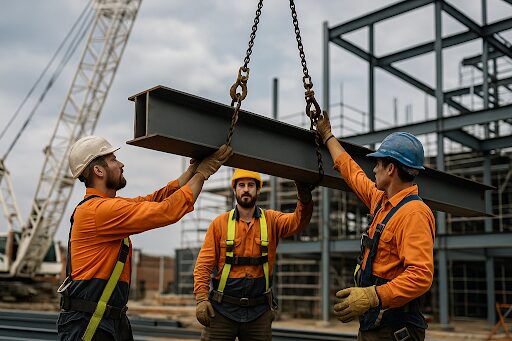
4. Miscommunication Among Crews
The Often Invisible Delay Factor
Even perfectly planned lifts break down when riggers, crane operators, and supervisors are not in sync. One unclear radio call or last-minute change can halt operations.
Breakdown points:
- Multiple supervisors giving conflicting instructions
- Weak radio procedures or visual confirmation gaps
- No formal pre-lift briefing, especially before shift changes
Solutions:
- Assign a single lift supervisor as command
- Standardise radio call signs and hand signals
- Hold daily lift briefings to confirm roles, signals, and contingencies
A disciplined “stop and confirm” culture helps avoid costly, preventable errors.
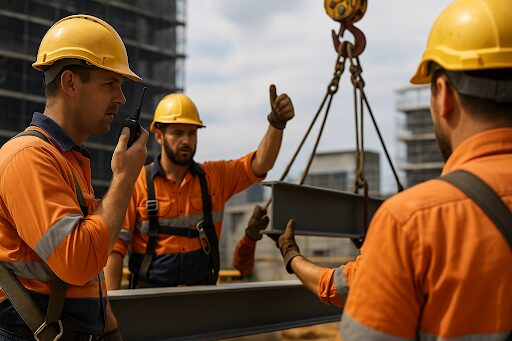
5. Site Constraints, Weather & Ground Conditions
External Factors You Must Manage
Sydney’s weather, terrain, and urban access create inherent challenges. Ignoring them invites unplanned shutdowns.
Common constraints:
- Wind gusts exceeding crane limits
- Rain-softened ground or unstable crane pads
- Overhead power lines and tight swing zones
Mitigations:
- Monitor live weather data and set wind alarms
- Use crane mats or road plates to stabilise surfaces
- Allocate buffer or “weather windows” for sensitive lifts
SafeWork NSW’s crane safety reports show that human error, equipment faults, and environmental factors are major contributors to crane incidents. SafeWork NSW
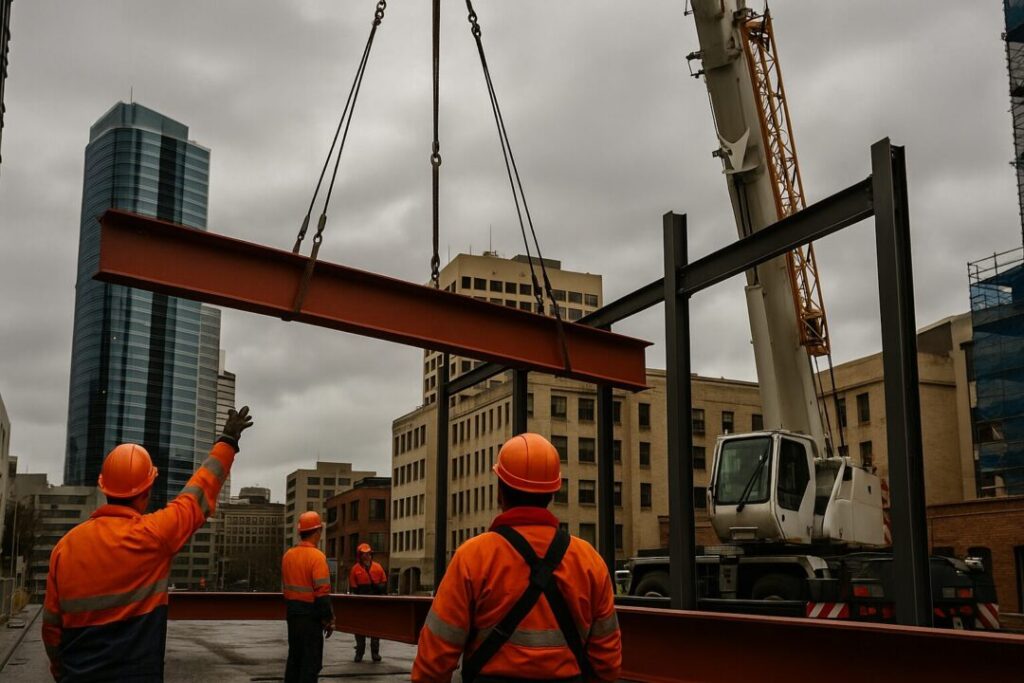
6. Compliance & Safety Oversights
Why It Can Stop Work Immediately
Steel erection is classed as high-risk work under NSW WHS laws. Missing permits, expired licences, or deficient SWMS can lead to shutdowns or fines.
Common failures:
- Outdated or missing HRW licences for riggers and dogmen
- No Safe Work Method Statements (SWMS) or incomplete crane permits
- Neglect of Australian Standards like AS 2550 and AS 1418
Mitigation steps:
- Maintain a live compliance register for personnel and plant
- Submit SWMS and permit documentation before mobilisation
- Perform pre-start safety audits and inspections
Under AS 2550, mobile crane operations must adhere to periodic inspections and safe use guidelines. Safe Work Australia
The standard also requires major inspections when a crane reaches its design working period. Scribd
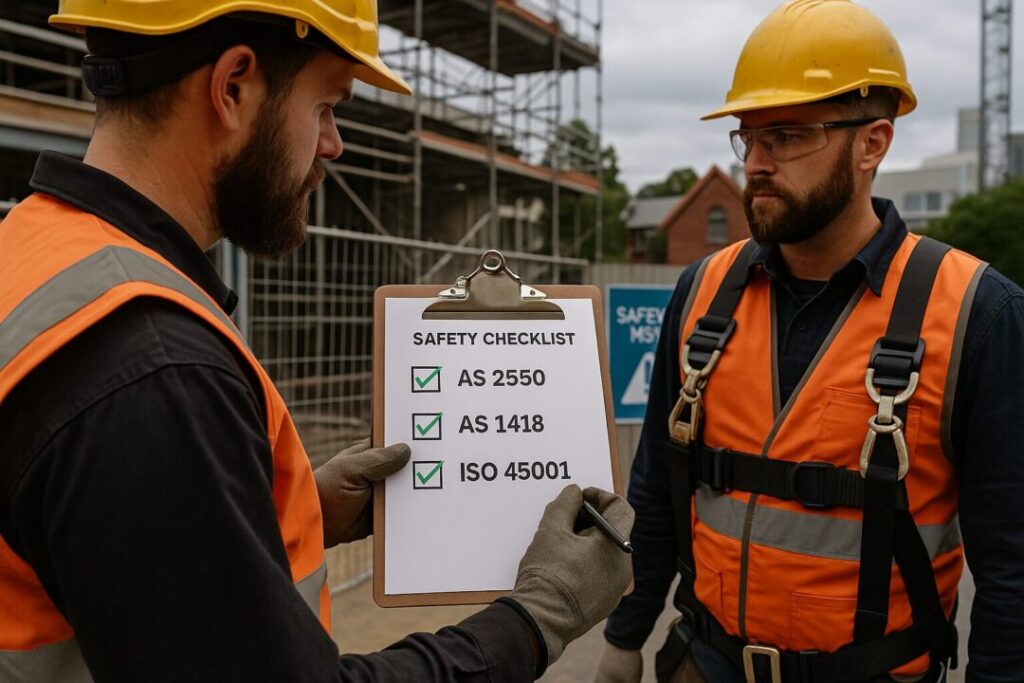
7. Subcontractor Misalignment & Trade Conflicts
Why One Delayed Trade Can Stall the Entire Project
Steel erection doesn’t exist in isolation. Late concreting, blocked access, or scaffolding conflicts can force crane wait time or repositioning.
Typical clashes:
- Delayed concreting or anchor embed works
- Scaffold or MEP activities blocking crane zones
- Uncoordinated trade sequencing
Prevention:
- Use a shared master schedule visible to all contractors
- Hold weekly coordination meetings across trades
- Lock-in crane hire after confirming trade readiness
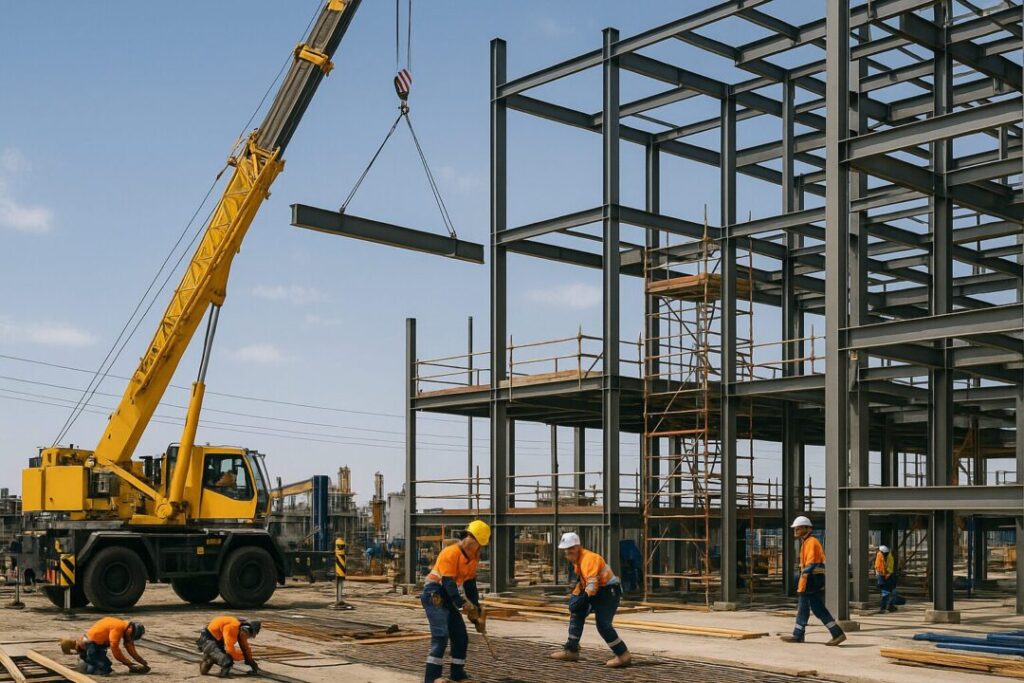
8. Proven Strategies to Prevent Delays (From Hard Bakka Field Experience)
Here’s what’s worked time and again on NSW projects:
- Develop lift-specific rigging plans, not generic ones
- Stage materials in true lift sequence
- Run pre-lift simulation or mock-up checks 24 hours ahead
- Schedule complex lifts during calmer morning hours
- Audit all licences, compliance, and inspection logs before mobilisation
- Digitally document every revision, inspection, and query
- Conduct a post-lift review to capture lessons learned
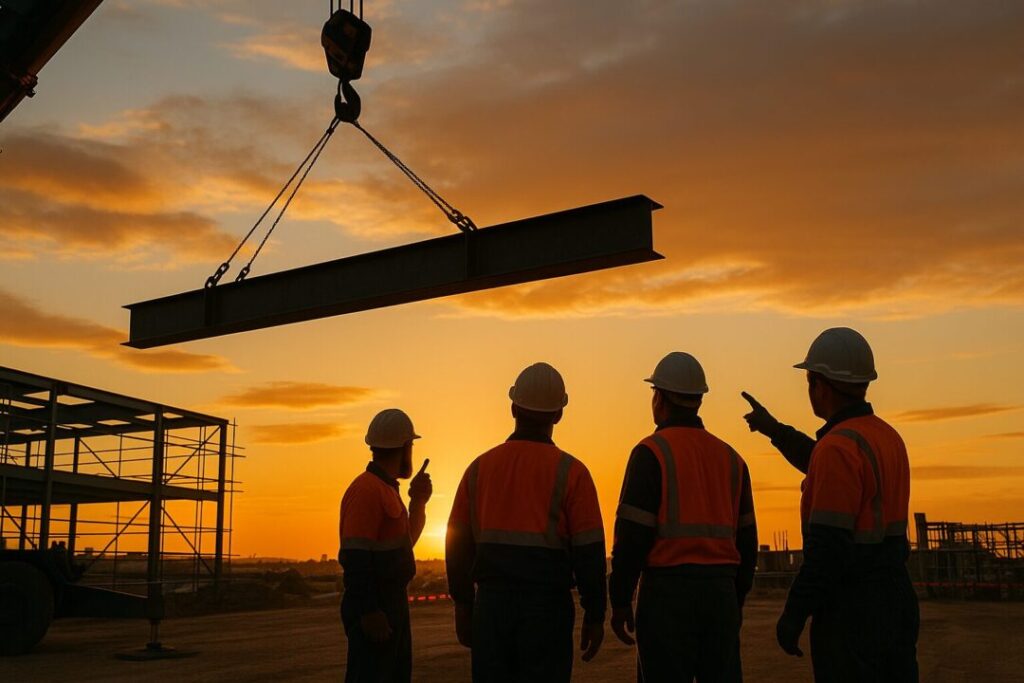
Expert Rigging Minimises Delays
Delays in steel erection aren’t inevitable—they’re preventable. With careful planning, strong communication, strict compliance, and experienced hands behind the lift, you can keep your project on time and on budget.If your next structural steel job is in Sydney or NSW, partner with Hard Bakka Rigging—your trusted specialist for precise, code-compliant, and safe steel erection.
📞 Contact us today to discuss your project or request a free lift plan consultation.


